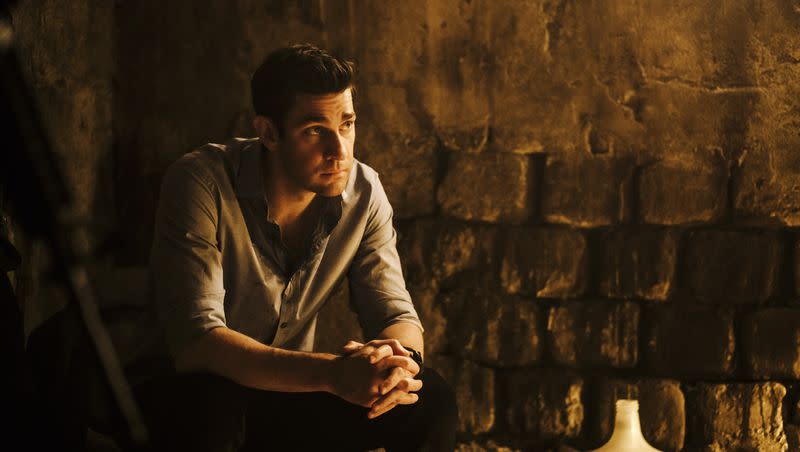Did you see the Latter-day Saint edition of the Bible in ‘Tom Clancy’s Jack Ryan’?

- Oops!Something went wrong.Please try again later.
If you blinked during the Season 4 opener of “Tom Clancy’s Jack Ryan,” you may have missed the Bible the camera focused on for a few seconds in Chao Fah’s office.
“Tom Clancy’s Jack Ryan” is the latest adaptation of the Jack Ryan universe where the eponymous character, who is a CIA analyst (and later deputy director), confronts corruption and embarks on dangerous missions to protect the U.S.
In the most recent season of the show, a Bible crops up in a couple episodes — the camera focuses in on it for a few seconds and then flickers away. Each time, it happens to be a King James Version of the Bible — the same one printed by The Church of Jesus Christ of Latter-day Saints. In the finale, its exact role is revealed, but no spoilers here.
In addition to the specific edition of the Bible, Latter-day Saint missionaries are mentioned in the season’s third episode. When speaking about his upbringing in Nigeria, Adebayo’ Ade’ Osoj said he grew up in “extreme poverty” and then, Latter-day Saint missionaries helped make it possible for him to go to school.
These allusions to Latter-day Saints are not just found in the TV series; Clancy fancied including them in his books. Here’s a look at some of the references and why Clancy included them.
Related
In “Clear and Present Danger,” protagonist Jack Ryan passes by the Washington D.C. Temple of The Church of Jesus Christ of Latter-day Saints.
“A decidedly odd-looking building, it had grandeur with its marble columns and gilt spires,” Clancy wrote. “The beliefs represented by that impressive structure seemed curious to Ryan, a lifelong Catholic, but the people who held them were honest and hardworking, and fiercely loyal to their country, because they believed in what America stood for.”
“The Hunt for Red October” author also had Latter-day Saint characters in his novels like John Tait, a Navy medical captain, who was a Brigham Young University alumnus. Tait was killed in a crash and described as “a Mormon” who “avoided everything with caffeine — coffee, tea, even cola drinks.” The character is also described as one of the best people who worked in service to the government, which may be a reason why Clancy made him a Latter-day Saint.
Clancy’s inclusion of these references was not a nod to his own faith — he grew up Roman Catholic. It may have, instead, been a nod to the widespread theory that, because of language skills and sobriety, Latter-day Saints are well represented in government agencies, according to a story from Daryl Austin in the Deseret News.
“Many religious believers and Mormons in particular are instilled with a strong desire to serve a cause greater than themselves, including a patriotic duty and love of country,” Pete Lapp, who has worked more than two decades in the FBI, told Austin.
Besides patriotism, another important element of Latter-day Saint characters in Clancy’s work is they abstain from alcohol.
Col. Robin Zacharias in “Without Remorse” grew up in Salt Lake City, Utah, and is also a Latter-day Saint in the novel. Zacharias is noted as being a teetotaler (and has a bad reaction when he drinks for medicinal purposes in the book).
When Zacharias is in jail, he notices a fellow Latter-day Saint was alongside him. “His body shuddered as his mind heard that most beloved of hymns, whose final line was not a lie at all, but an affirmation,” Clancy wrote. “All is well, all is well.” This is a reference to the well-known Latter-day Saint hymn “Come, Come Ye Saints,” penned by pioneer William Clayton.

